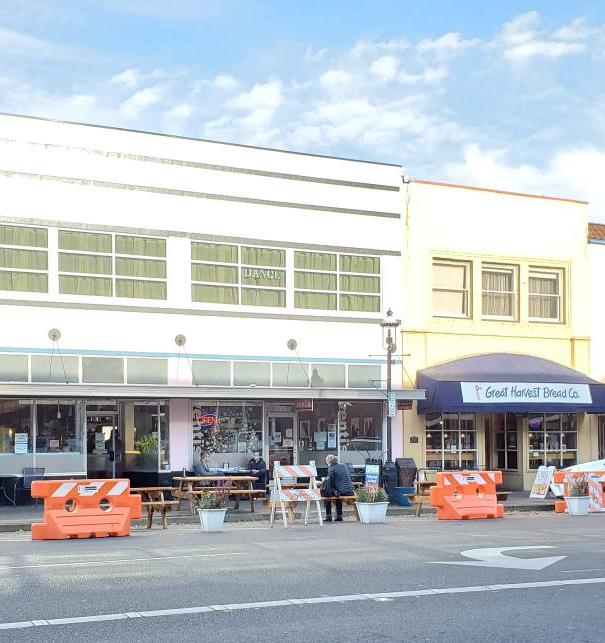
3 minute read
A DOWNTOWN RESPONSE
Daniel Roth, Assoc. AIA AIA Salem Section Director
It’s early March 2020 B.C. (Before Covid), and downtown Salem is continuing to change and improve. Many businesses and restaurants are fl ourishing with increasing demand and traffi c, and many are even looking to expand. Over the past decade, the downtown area of Salem has seen considerable positive change. A district that was once quite empty past fi ve o’clock now has many people inhabiting restaurants, bars, and various new shops well into the evening. With this growth and optimism for an even more buzzing downtown ahead, the pandemic could not have struck at a worse time. On March 23, Governor Kate Brown initiated the Stay Home, Save Lives order, deeply affecting downtown activity and forcing the City, along with its many business owners, to rethink everything. As restrictions and requirements began to take shape, City of Salem planner Sheri Wahrgren knew that the City needed to take action quickly to give businesses a chance to stay afl oat. In collaboration with the City Council, Wahrgren began brainstorming and researching, borrowing ideas that other municipalities were enacting as well as coming up with some new out-of-the -box ideas unique to Salem. As the beginning of summer approached, changes began. The City, in partnership with the local Chamber of Commerce, established a “City Eats” webpage, showcasing local eateries that offered to-go orders.
Advertisement
In downtown, select 3-hr parking spaces in front of restaurants were changed to 15-minute in order to encourage takeout orders. Wahrgren also worked to expedite the permitting process and waive the application fee to allow restaurants to obtain cafe permits, allowing outdoor seating and serving. Perhaps most noticeably, the City began implementing street and parking closures downtown. Partnering with Public Works, select downtown street sections were shut down on summer weekends to allow restaurants to provide safe and distanced seating for customers. Small swaths of diagonal parking spaces were barricaded to make extra seating space for businesses along the busy arterials. With this series of quick changes, the downtown district was active again.
Although these changes were regarded as extremely positive by the public, it did reveal a set of new challenges, particularly to downtown retail businesses. While street and parking closures helped restaurants generate revenue and customers, it took away the parking availability for shoppers looking to park right in front of retail stores. As T.J. Sullivan of the Main Street Association put it, the whole process was a “game of Whack-a-Mole.” You slam one problem down, and a different one pops up next to it.
The luxury and culture of parking right in front of a retail business can be contributed in some form to Salem being the second largest city in the United States with free parking downtown. Though (free) parking garages exist blocks away, people are still expecting to be able to pull up directly in front of the business they wish to visit, and any parking closures nearby can affect retail business owners. In addition to the inconvenience of lost parking spaces, street closures take a lot of manpower, and the use of sawhorses, “Road Closed” signs, and concrete barricades are not the most attractive and inviting presences on the street.
Though the summer has passed and weekend street closures are no longer practical due to weather, you can still spot parking closures and outdoor dining available. Many businesses have gotten creative with their newly claimed seating area, adding potted plants between barricades or setting up tents and canopies to protect from the elements. Even though the reality of COVID-19 forced this new environment, Wahrgren is hopeful to use these ideas and initiatives as an opportunity to test for future development. One such idea is the City creating a rental program for a platform that creates a level surface between the sidewalk and the street for businesses to use for seating. Ideas such as this are meant to encourage businesses to seek out long-term solutions with the City’s assistance. Additionally, the City will work to incorporate solutions like these that benefi t both restaurants and retail businesses, so that everyone is positively impacted, and businesses can continue their upward trajectory in downtown.
A very special thanks to Sheri Wahrgren, Salem City Planner, and T.J. Sullivan, President of the Main Street Association for their contributions to this article.
Daniel Roth, Assoc. AIA, is the Section Director for AIAO’s Salem Section, and is an Architectural Intern at CB Two Architects in Salem.





